IT'S NOT A VACCINATION, IT'S A QUANTUM TAGGING! IT WAS NEVER ABOUT THE VIRUS.
STOP QUANTUM TAGGING!!!
https://gizmodo.com/crazy-military-tracking-tech-5803217
With one technology, trackers might not even need to see you to get a fix on your location. Like bloodhounds on the hunt, they can smell their way to you. Tracer Detection Technology Corp. marks targets with a paraffin wax crayon, filled with a perfluorocarbon, a thermally-stable compound used in everything from refrigerators to cosmetics. The perfluorocarbon's vapor can then be tracked with sensors, such as a gas chromatograph. The smell lingers for hours. Think locking yourself in a room with the windows closed or removing the tag will help? Too bad, you still reek. According to a research report submitted to the Justice Department (.pdf), the perfluorocarbon tracers can "permeate closed doors and windows, containers and luggage," and even give you away for a while after a tagged item is removed.
Over the years, the company has received a number of research contracts from the Navy. But Tracer president Jay Fraser won't say much about how those projects have gone. "Tracer is developing a unique TTL capability that will make it very difficult for enemy and criminal enterprises to operate," he e-mails Danger Room. "The nature of our current and pending customers makes it hard for us to answer the rest of your questions."
Now a second tracer: Imagine walking up to a target and patting him on the back with a clear liquid on your hand. He might never notice it, but you'd be able to see - and follow - him from a distance using night vision goggles. Oregon-based Voxtel makes a product, "NightMarks," that can do just that.
NightMarks are tiny nanocrystal quantum dots
that can be hidden in clear liquids and seen only through a sensor like night-vision goggles.
How do these tiny dots work? "You can change the optical properties of materials by making them small on the order of a nanometer in size," Voxtel CEO George Williams tells Danger Room. "When they get down to that size, they have quantum-confinement effects that cause their absorption and emission properties - the light they absorb, the light they put out - to change," he says. "And so using that, you can make all sorts of spectral barcodes that allow you to identify it and track."
Williams is tight-lipped about Voxtel's relationship with the Defense Department and the military applications of its technology. However, a quick look at one 2008 Voxtel contract with the Navy indicates that the Department already understands how useful the technology can be for tracking targets. The contract asks for "covert microtaggants composed of nanocrystals" visible through sensors like night-vision goggles to "enable war fighters the ability to track entities buried in urban clutter."
Another company has proposed a somewhat counterintuitive solution for military tagging: making sure its signal decays. You might think that being able to see a taggant signal for as long as possible is always a good thing, but according to a briefing (.pdf) from TIAX LLC, it can actually be a problem.
Leftover taggants that last for long periods of time can apparently clutter up an area with signals, and the mess can hinder a tracker's ability to distinguish between the subjects of new and old tags. If they're still advertising their presence long after usefulness, opponents might also be able to find and reverse-engineer the material. To get around the problem, the briefing mentions that TIAX is working on "customizable degradable taggants" - exact composition unspecified - that will lose their signal over time.
Other technologies are useful in defensive tracking, such as for perimeter security on small firebases. SpotterRF, makes a small radar-sensor system, the SpotterRF M600, that's about the size of a small netbook computer and can conveniently point out humans creeping up on your position on Google Earth. The M600 uses radio waves in the X band that can detect walkers up to 1,000 meters [0.62 miles] and vehicles as far away as 1,500 meters. It integrates with Google Earth by using its own built-in GPS to fix the device's position and overlay tracked targets onto the mapping service.
The effect, a company rep e-mails, is "like being able to stick a GPS tracking device on someone without having to come anywhere near the person or vehicle." It's yet another way to hunt someone down who might not want to be hunted.
Micro Radio Transmitter
Oak Ridge National Laboratories developed this micro-miniature radio frequency transmitter (above). It's smaller than a dime, and has a range of three kilometers [1.9 miles].
Bioreactive-Tagged Arm
A 2007 U.S. Special Operations Command briefing on "Continuous Clandestine Tagging, Tracking, and Locating" technology lists a number of tracking capabilities. This "bioreactive taggant" is identified as a "current capability."
Quantum-Dot Tagging
This picture from a Sandia National Labs report shows quantum dots - crystals that change their optical properties, depending on their size. These dots are made of cadmium selenide, illuminated on a paper towel. Oregon-based Voxtel makes nanocrystal quantum dots that can be hidden in clear liquids and seen through night-vision goggles.
Infrared-Flash Tagging
In June 2009, al-Qaida released an electronic book, The Ruling Concerning Muslim Spies, which claimed to publish photos of some of the devices Pakistani "spies" used to guide American drone strikes. The pictures appear to show infrared beacons, powered by a 9-volt battery.
Radar-Responsive Tag
Sandia National Laboratories has carried out development on these radar-responsive tags, which are like a long-range version of the ubiquitous stick-on RFID tags used to mark items in shops. The radar-responsive tag stays asleep until it is awakened by a radar pulse. The tags in Walmart have a range of a couple of meters, Sandia's tags can light up and locate themselves from 12 miles away.
SpotterRF Tag
The M600 made by SpotterRF is a compact radar system useful for tracking humans and vehicles on small firebases or in perimeter security. The five-pound system can detect humans walkers out to 1,000 meters [0.62 miles] and vehicles up to 1,500 meters, and plot their positions on Google Earth.
Human Thermal Fingerprint
In its 2007 briefing, U.S. Special Operations Command also describes its goal of identifying targets by their body heat or "human thermal fingerprint" from a long distance away.
Chemical Light-Stick Tag
Another photo from al-Qaida's The Ruling Concerning Muslim Spies: It appears to be chemical light sticks - again, used to signal to the drones where to strike.
The contract asks for “covert microtaggants composed of nanocrystals” visible through sensors like night-vision goggles to “enable war fighters the ability to track entities buried in urban clutter.”
https://www.ojp.gov/pdffiles1/nij/grants/197719.pdf
BACKGROUND:
Perfluorocarbon tracers (PFT)
are safe, (!!!!!!!!!!!!!!!!! NO, THEY ARE NOT!!!!!!!!!!!!!!!!!!)
volatile, non-reactive, environmentally benign compounds. The ambient background concentrations of the five routinely used PFTs are in the range of parts per 1015 of air. The perfluorocarbon tracer technology, by virtue of its high vapor pressure provides the unique ability to permeate closed doors and windows, containers and luggage, yet is impervious to electronic interference and other problems inherent with tagging technologies. Once a location reaches steady state, an actively emitting tagged item should provide vapor traces that are detectable in the vicinity of the item (even temporarily following removal of the tagged item). It is noted that an issue has been raised regarding the global warming potential of the Perfluorocarbon class of compounds. A detailed paper and discussion this subject follows in a separate section of this report. It is important to note however, as stated, these materials have ambient background concentrations of the five routinely used PFTs are in the range of parts per lOlS of air. This fact not only makes PFTs ideal candidates for tagging and tracking, but also for their principal, non-medical use in environmental testing, environmental testing, and also forms the basis of their extremely low global warming impact. Brookhaven National Laboratory routinely uses PFTs in its work for the Environmental Protection Agency, e National Oceanic & Atmospheric Administration (NOM) and various public utilities.
it could identify PFT-tagged substances for a distance of several hundred, or even thousand, feet. We propose to investigate using for this purpose active optical excitation of the vaporized taggant molecules with the remote light source emitting light beyond the visual spectrum and to observe the fluorescent light radiated by the molecules as the result of optical de-excitation. The crux of the problem is to design a system that can be powerfi.11 enough to generate the fluorescence with intensity exceeding thermal infrared noise emitted by surrounding objects, including the air itself, and to deploy or develop the detector sensitive enough to allow for reconstructing the “imagery of the PFT vapor plume and the location of its source.
https://pubs.acs.org/doi/suppl/10.1021/la202679p/suppl_file/la202679p_si_001.pdf Microsoft Word - Gorelikov-SI-proof.doc (acs.org)
https://pubs.acs.org/doi/10.1021/acs.langmuir.2c00126 Generating Lifetime-Enhanced Microbubbles by Decorating Shells with Silicon Quantum Nano-Dots Using a 3-Series T-Junction Microfluidic Device | Langmuir (acs.org)
https://pubs.acs.org/cms/10.1021/acs.langmuir.2c00126/asset/images/large/la2c00126_0005.jpeg
SO, WE HAVE QUANTUM DOTS FOR QUANTUM TAGGING (PERFLUOROCARBONS) AND LED/UV STREETLIGHTS FOR QUANTUM DOTS EXCITATION:
https://www.ncbi.nlm.nih.gov/pmc/articles/PMC6723292/ Effect of Excitation Wavelength on Optical Performances of Quantum-Dot-Converted Light-Emitting Diode - PMC (nih.gov)
Thus, the UV-excited quantum-dot solution can achieve a wider color gamut and has great potential for development in quantum-dot applications, especially in the display field.
https://www.allegromicro.com/en/about-allegro/news-room/2020/allegro-acquires-voxtel
About Allegro MicroSystems
Allegro MicroSystems is redefining the future of sensing and power technologies. From green energy to advanced mobility and motion control systems, our team is passionate about developing intelligent solutions that move the world forward and give our customers a competitive edge.
With global engineering, manufacturing and support, Allegro is a trusted partner to both large enterprises and regional market leaders worldwide.
https://www.photonics.com/Articles/Voxtel_Awarded_52M_DOD_Contract/a62327
…
IT'S A CRIME, IT'S A MURDER.
THE PEOPLE WHO DO THIS ARE CRIMINALS.
https://pubmed.ncbi.nlm.nih.gov/22853558/ Are quantum dots toxic? Exploring the discrepancy between cell culture and animal studies - PubMed (nih.gov)
Despite significant interest in developing quantum dots (QDs) for biomedical applications, many researchers are convinced that QDs will never be used for treating patients because of their potential toxicity.
https://www.sciencedirect.com/science/article/abs/pii/S0009279723000637?via%3Dihub Quantum dots are time bomb: Multiscale toxicological study - ScienceDirect
This study demonstrates that quantum dots are not as low in toxicity as previously thought to be and pose a serious risk when entering living organisms.
https://www.popsci.com/technology/article/2010-08/anyone-anywhere-anytime/ PopSci Investigation: What Kind Of Top-Secret Assassination Tech Does $58 Billion Buy?
Every year, tens of billions of Pentagon dollars go missing. The money vanishes not because of fraud, waste or abuse, but because U.S. military planners have appropriated it to secretly develop advanced weapons and fund clandestine operations. Next year, this so-called black budget will be even larger than it was in the Cold War days of1987, when the leading black-budget watchdog, the Center for Strategic and Budgetary Assessments (CSBA), began gathering reliable estimates. The current total is staggering: $58 billion—enough to pay for two complete Manhattan Projects.
Where does the money go? Tracking the black budget has always been a challenge. Constantly shifting project names that seem to be randomly generated by computers—Tractor Cage, Tractor Card, Tractor Dirt, Tractor Hike and Tractor Hip are all real examples—make linking dollar amounts to technologies impossible for outsiders. But there are clues.
According to Todd Harrison, an analyst at the CSBA, the allocations for classified operations in the 2011 federal budget include $19.4 billion for research and development across all four branches of the military (funding for the CIA, including its drone strikes in Afghanistan and Pakistan, is contained within the Defense Department black budget), another $16.9 billion for procurement, and $14.6 billion for “operations and maintenance.” This latter category, Harrison notes, has been expanding quickly. This may suggest that many classified technologies are now moving from the laboratory to the battlefield.
In fact, the rise in classified defense spending accompanies a fundamental change in American military strategy. After the attacks of September 11, the Pentagon began a shift away from its late Cold War–era “two-war strategy,” premised on maintaining the ability to conduct two major military operations simultaneously, and began to focus instead on irregular warfare against individuals and groups. That strategic shift most likely coincides with an investment shift, away from technology that enables large-scale, possibly nuclear, war against superpower states and toward technology that helps military planners hunt and kill individuals. Each branch of the military uses different language to describe this process. Pentagon officials have spoken openly about their desire to use advanced technology to “reduce sensor-to-shooter time” in situations involving “time-sensitive targets.” The head of U.S. Special Operations Command talks about “high-tech manhunting,” while Air Force officials describe plans to compress the “kill chain.”
Even inside the Pentagon, few people know the precise details of the black budget. But by combining what is known about Pentagon goals and what is known about the most recent advances in military technology, we can begin to sketch its general contours.
The first link in the kill chain: finding the person to hunt. Particularly in Afghanistan and Pakistan, this type of intelligence gathering is increasingly done using unmanned aerial vehicles (UAVs). According to the New America Foundation, a nonprofit think tank, the U.S. conducted 45 drone strikes in Pakistan in the first six months of this year. The centrality of unmanned aircraft to such missions suggests that the black budget is almost certainly already funding next-generation drones.
In April 2009, a French magazine published a photograph of one recent product of that funding—a slender-winged aircraft that had previously been spotted in southern Afghanistan and that aerospace experts had begun calling the Beast of Kandahar. After another photograph surfaced, this one a clear shot of the craft on the runway in Kandahar, the Air Force issued a statement that finally gave the Beast a formal identity: the RQ-170 Sentinel.
Manufactured by Lockheed Martin, the RQ-170 is a tailless flying wing with the telltale shape and surface contours of a stealth aircraft. Black-plane watchers immediately noticed similarities between the RQ-170 and Lockheed’s unmanned Polecat aircraft, which UAV observers had long speculated was being developed in secret and which was finally made public at the Farnborough International Airshow in England in 2006. The Air Force says that the Sentinel is a reconnaissance drone, a claim supported by the aircraft’s lack of visible armaments, by the sensors that appear to be embedded in its wings, and by its “RQ” designation.
But much about the RQ-170 is puzzling. Why would the Air Force need a stealth aircraft in Afghanistan, a country with no radar defense system? It wouldn’t, according to those familiar with the drone. The RQ-170 was developed with a more sophisticated enemy, perhaps China, in mind. That doesn’t mean it couldn’t be adapted for current conflicts, however. Unlike the relatively easy-to-spot Predator and Reaper drones, the RQ-170’s stealth could allow it to conduct missions that those aircraft cannot, such as clandestine tracking, or slipping unnoticed across Afghanistan’s border into Iran or Pakistan to spy on their nuclear programs.
Aircraft like the RQ-170, the Predator and the Reaper can get only so close to their targets, of course, which is why the Pentagon is developing micro-drones designed to investigate dangerous terrain undetected. In April the Washington Post reported that the CIA was using pizza-platter-size micro-drones to find insurgents in Pakistan. And the 2010 Pentagon budget contains a brief unclassified reference to Project Anubis, a micro-drone developed by the Air Force Research Laboratory. The Air Force won’t talk about that specific vehicle, but a more general 2008 marketing video released by the lab did suggest that future micro-UAVs might be equipped with “incapacitating chemicals, combustible payloads, or even explosives for precision targeting capability.” The video depicts an explosives-laden drone dive-bombing and killing a sniper. Budget documents indicate that Project Anubis (named for the ancient Egyptian god of the dead) is now complete, which means a lethal micro-drone could already be in the field.
The Pentagon is forging the next link in the kill chain—following an individual—with at least one high-priority research program. The Clandestine Tagging, Tracking and Locating initiative (abbreviated both as CTTL and TTL), which was conceived in 2003, is slated to get about $210 million in unclassified funding between 2008 and 2013 and may receive more than that from the black budget. “The global war on terrorism cannot be won without a Manhattan Project–like TTL program,” was how officials from the Defense Science Board, a civilian committee that advises the Pentagon, described the situation in a 2004 presentation, adding that “cost is not the issue.”
In a 2007 briefing, Doug Richardson, an official working in the Special Reconnaissance, Surveillance, and Exploitation program in Special Operations Command, said that the Pentagon wanted to use 14 different technologies for tagging and tracking targets such as people and vehicles.
Tagging could involve marking targets with invisible biological paints or micromechanical sensors; tracking would mean monitoring those markers from a distance.
Other schemes entailed capturing a person’s “thermal fingerprint” and then tracking him or her, perhaps from aircraft equipped with infrared sensors.
(!!!!!!!!!!!!!!!!!!!!!!!!!!!!!!!!!!!!!!!!!!!!!!!!!!!!!!!!)
More details can be found in proposals from companies and scientists seeking Pentagon contracts. One such proposal, from a University of Florida researcher, uses insect pheromones encoded with unique identifiers that could be tracked from miles away. Other plans employ biodegradable fluorescent “taggants” that can be scattered by UAVs. Voxtel, a private firm in Oregon, has already made available a product called NightMarks, a nanocrystal that can be seen through night-vision goggles and can be hidden in anything from glass cleaner to petroleum jelly.
Perhaps the most advanced tagging concept is “smart dust,” clouds of “motes,” tiny micro-electromechanical sensors that can attach themselves to people or vehicles. Thousands of these sensors would be scattered at a time to increase the chance of at least one of them reaching its target. Kris Pister, a professor at the University of California at Berkeley, was sponsored by the Defense Advanced Research Projects Agency (Darpa), the Pentagon’s R&D branch, more than a decade ago to work on smart dust and was able to create sensors the size of rice grains. In the beginning, he now says, he and his colleagues imagined “smart burrs” that could attach to a target’s clothing as he or she brushed by, or “smart fleas” that could jump onto their targets. Pister says that this kind of autonomous microsensor is probably still not feasible. In 2001, however, his group succeeded in scattering more-primitive smart-dust motes from a small aerial drone and using them to track vehicles. A single UAV could easily carry thousands of tags, he says.
Citing security concerns, the Pentagon declined to elaborate on its research on clandestine tracking. (When I asked Zachary Lemnios, the agency’s chief technology officer, about advances in tagging, tracking and locating, he mentioned only “recent successes” and “state-of-the-art results.”) Yet in the same 2007 briefing in which Richardson delivered the Pentagon’s wish list of tagging technologies, he said he expected some or all of them to go into service by 2009. Shortly before 2009 arrived, the Los Angeles Times reported that soldiers in Pakistan were using sensors mounted on Predator drones that could track individual combatants even inside buildings—a report that, if accurate, suggests that tagging technologies may now be deployed overseas.
Technologically, the precise, one-hour capability is not inconceivable. By leaving the Earth’s atmosphere and traveling at 15,000 mph, an intercontinental ballistic missile can reach any point in the world within 30 minutes. Take the nuclear warhead off, and it becomes a conventionally armed Prompt Global Strike weapon. But it’s not that simple. This solution places the Pentagon’s current emphasis on killing individuals in direct conflict with its previous emphasis on fighting large military powers: Russian defense systems are designed to immediately detect the launch of an ICBM anywhere in the world; the government must then decide within minutes whether to retaliate. As a result, until Washington and Moscow find a way to distinguish conventionally armed ICBMs from nuclear ones, firing an ICBM at Afghanistan with the intention of killing even just one person could trigger a nuclear war.
To counter concerns that such an ICBM is heading for Russia, Pentagon officials have said that these weapons could be launched from California, where there are no nuclear-tipped missiles. (Since the placement of ICBMs is regulated by treaty and subject to inspection and verification, this system would, in theory, ensure that Moscow knows whether a missile is armed with a conventional warhead or a nuclear one. But this plan relies on Russia’s trust.)
An alternative to the conventionally armed land-based ICBM is a hypersonic weapon, essentially a cruise missile capable of traveling at many times the speed of sound—faster than anything in today’s conventional arsenal. These missiles would not have to leave the Earth’s atmosphere and would have very different trajectories from ICBMs, so Russia would be less likely to mistake them for nuclear weapons.
The Pentagon has mentioned two non-ICBM candidates for Prompt Global Strike, one from the Army and one from Darpa. Both of these weapons would be boosted into the atmosphere by rockets and then glide back to Earth at hypersonic speeds. In addition to these official Prompt Global Strike options, the Pentagon is conducting at least three other hypersonic or near-hypersonic research efforts: the Air Force’s X-51 WaveRider, which used a scramjet engine to accelerate to Mach 6 in May; the Navy’s Revolutionary Approach to Time-Critical Long-Range Strike project, known as RATTLRS; and the Darpa-sponsored HyFly, a dual-combustion ramjet. (Ramjets and scramjets achieve rocket-like speeds without the heavy burden of liquid oxygen by mixing jet fuel with compressed air that enters the engine from the atmosphere.)
The proliferation of hypersonic research may mean that the Pentagon has faith in the technology. But it also makes black-budget watchers like John Pike, the director of the military information Web site GlobalSecurity.org, suspicious. Pike believes the military’s hypersonic programs may just be a cover for yet another black project. What kind, though, he has no idea.
“Have you ever tried to get to the bottom of the American hypersonics program?” Pike asked me rhetorically. “You know, I tried to about five years ago, and it made no sense. There were just too many programs.” Although this could just be typical Pentagon duplication, Pike sees something more suspicious. “If I was building a cover for something, I would either reduce the signal or increase the noise,” he says. “I think they’re increasing the noise.”
https://outraged.substack.com/p/quantum-tagging-is-murder
https://outraged.substack.com/p/hemorrhage-fever-or-ultrasonically
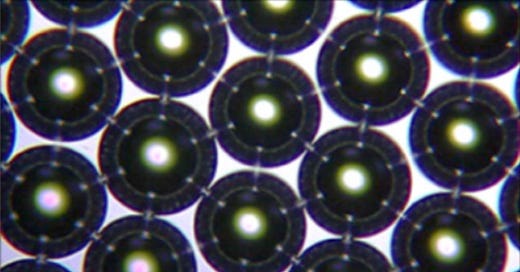




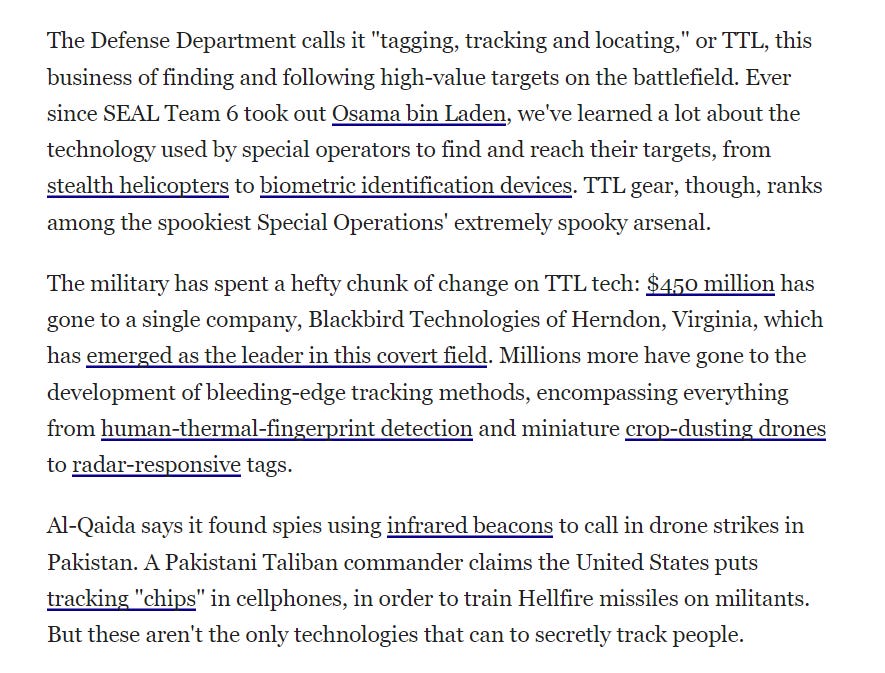

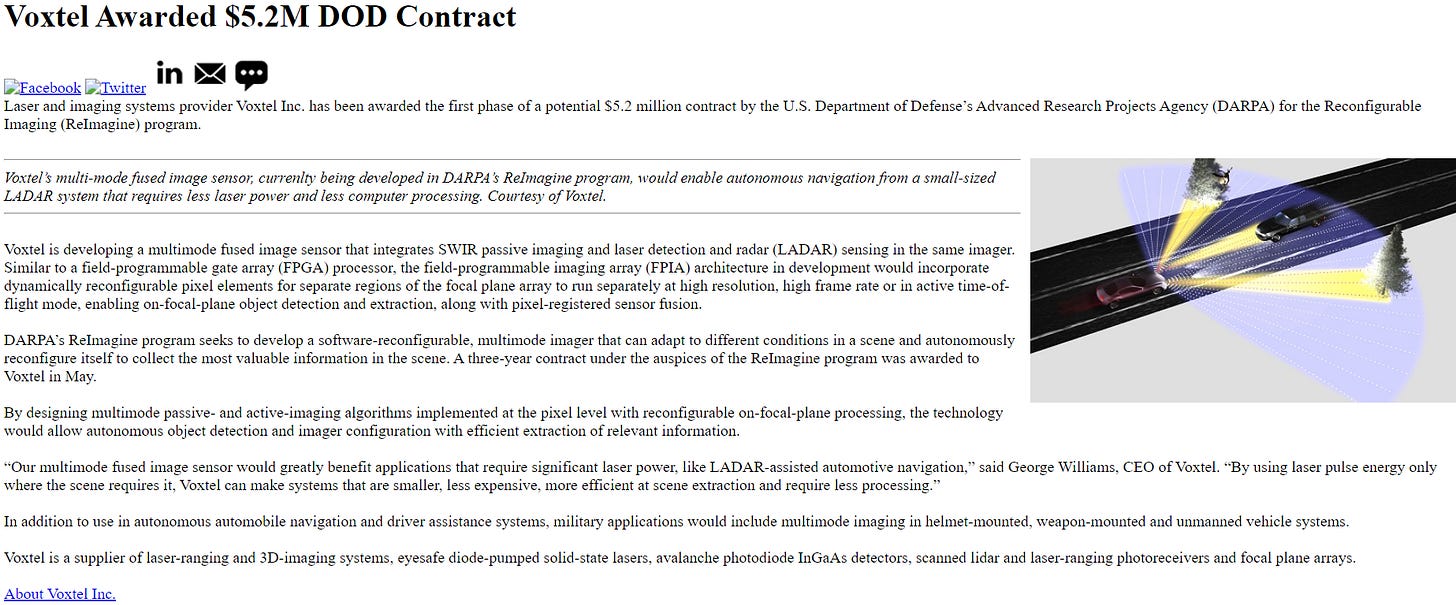


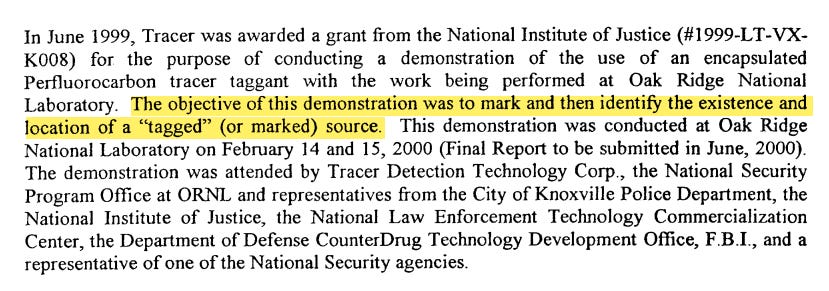
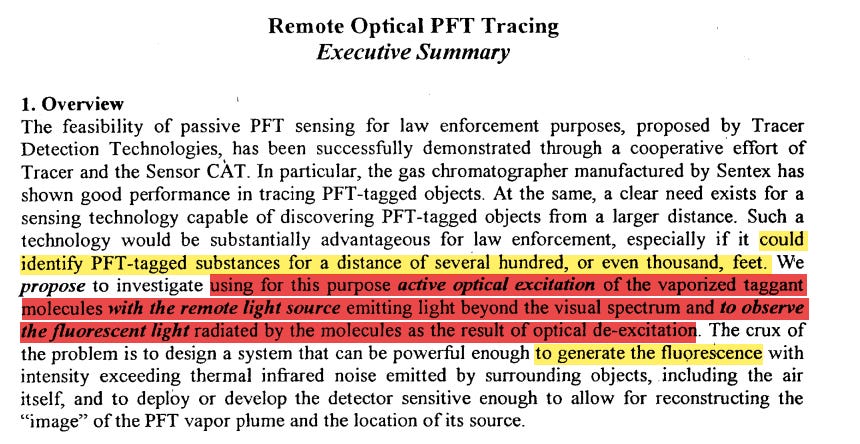


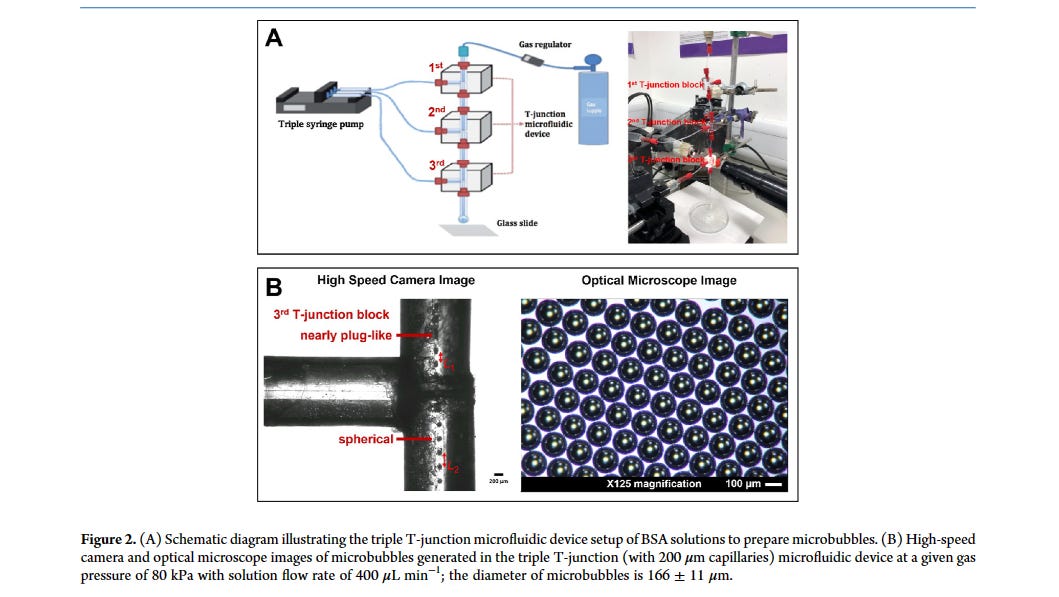
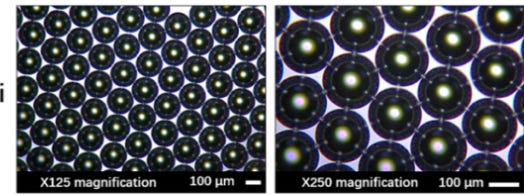



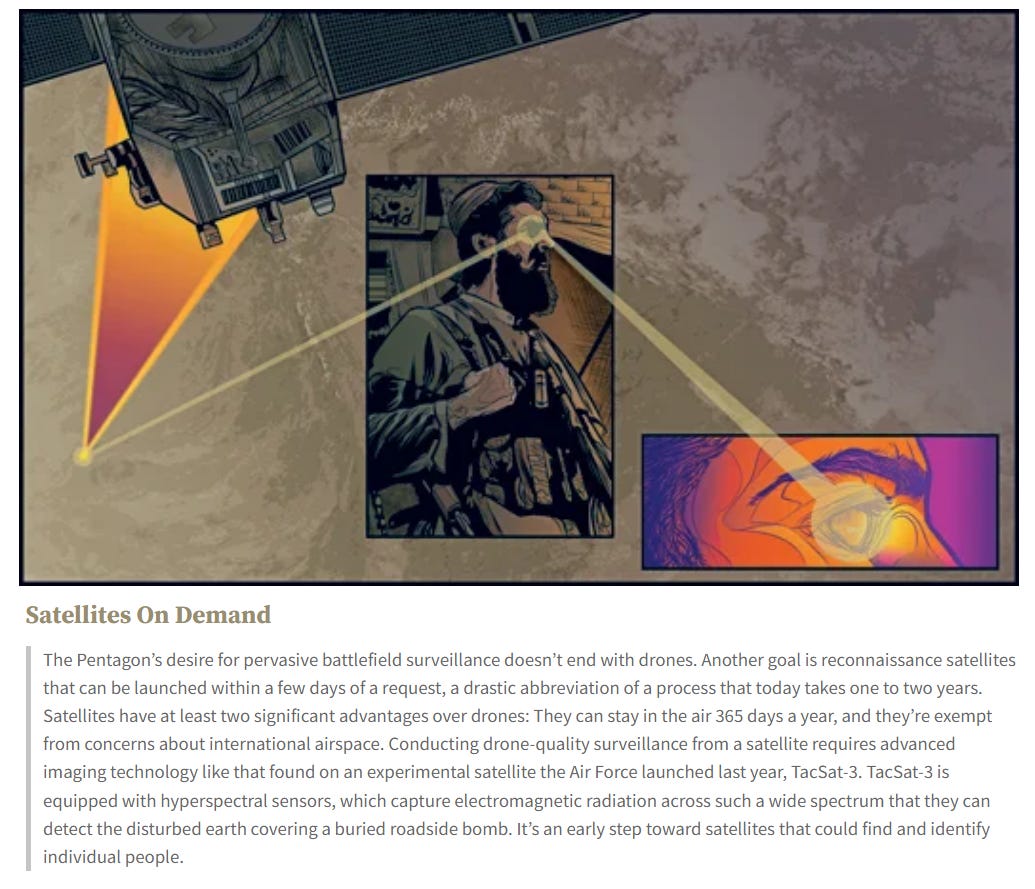
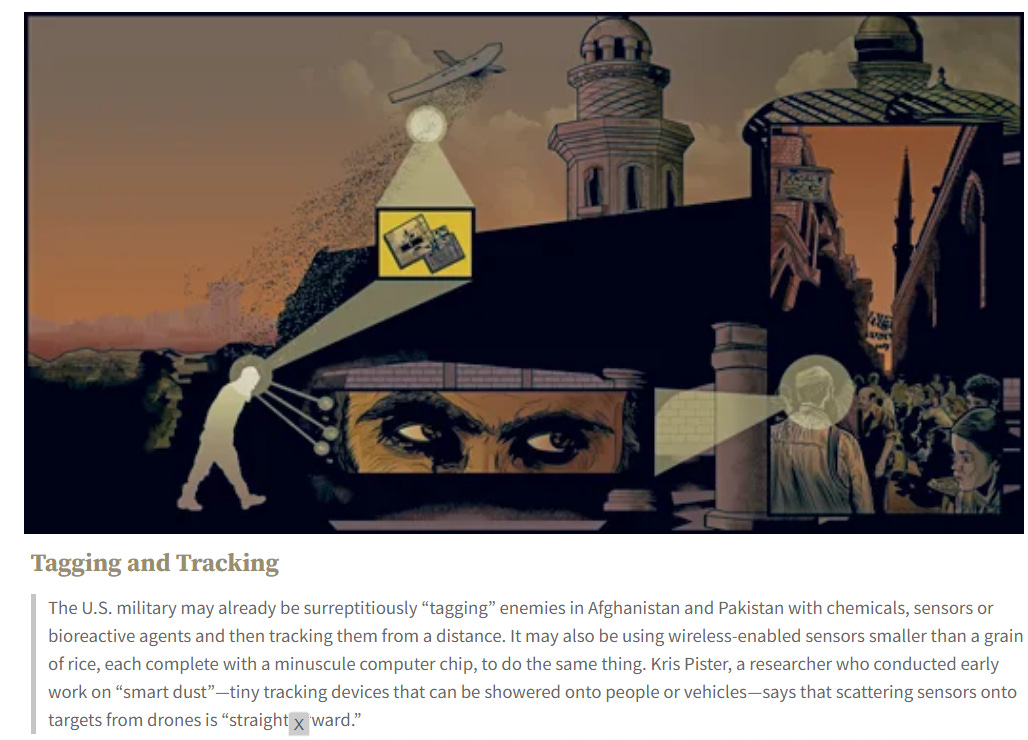
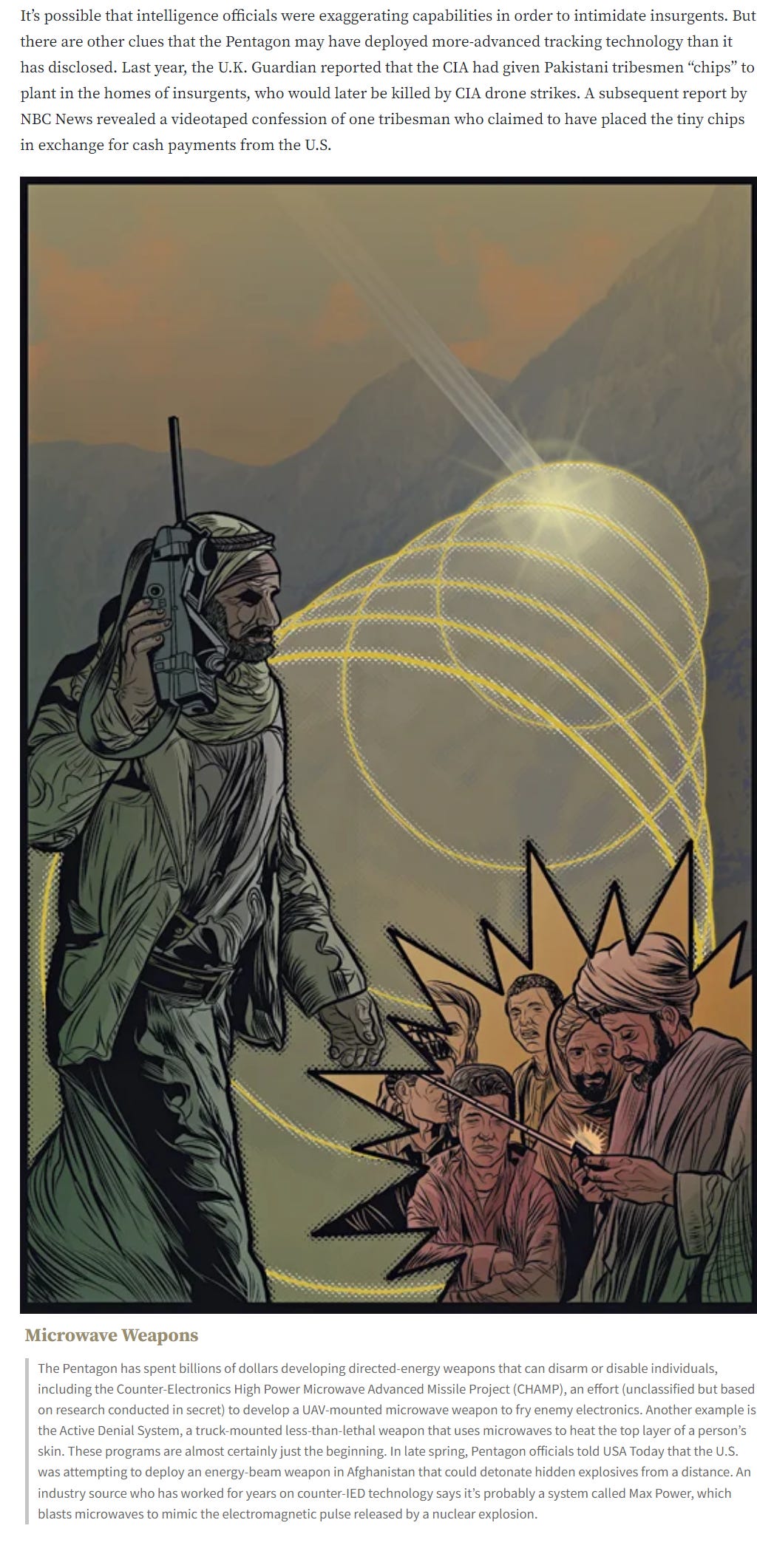
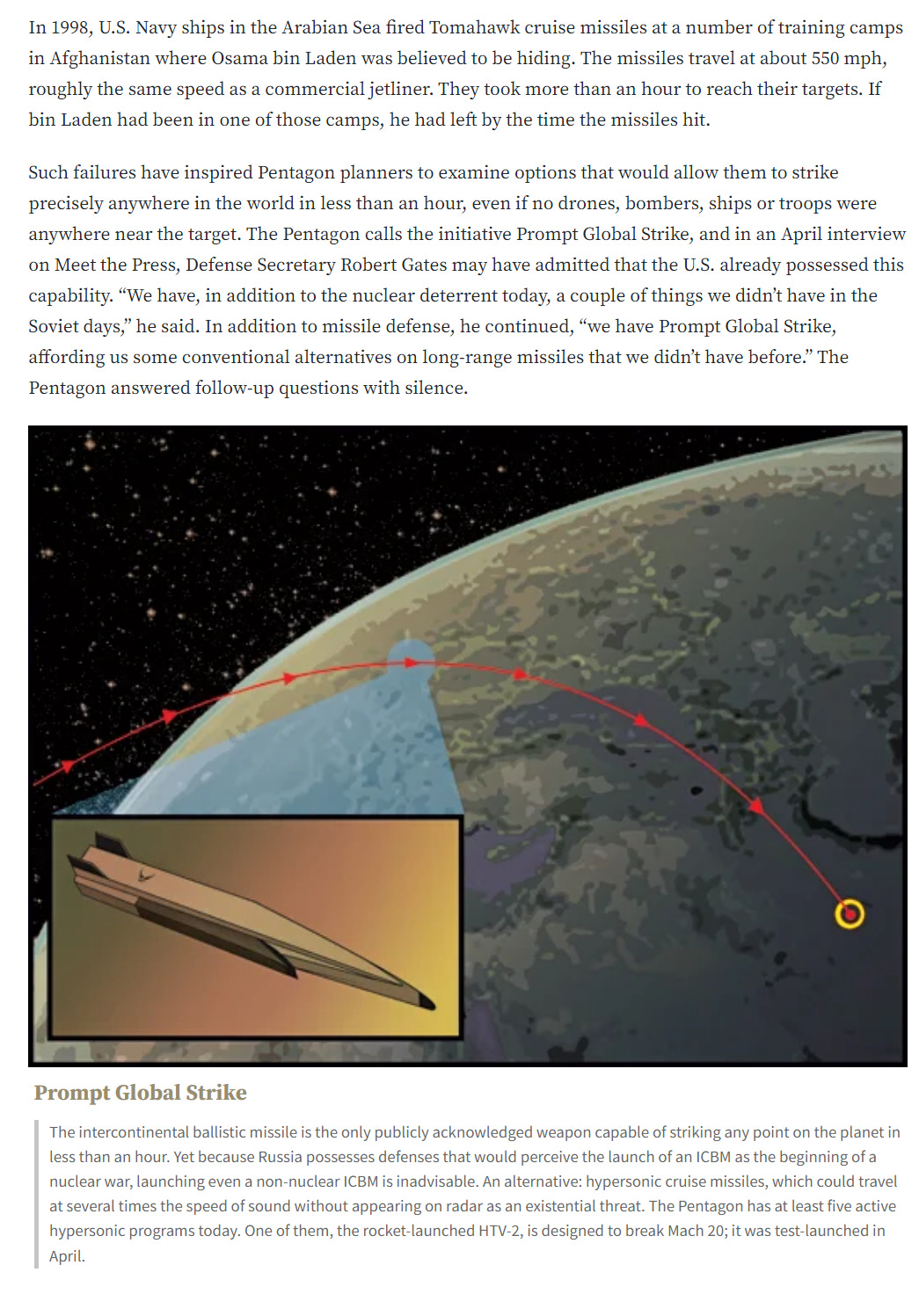
This is disgusting shit for the gov to invade, track and murder citizens.
The horrendous thing is we don't want it and we are paying for it being created right under our noses and it is going to be used on us.
Forget the Al Queda crap !! No such bull sh...t. Forget the Enemy crap! It is to be used on the citizens to create a slave state.
We need to swing the pendulum the other way and get rid of all this AL crap and the twisted evils that contribute to this planned destruction of humanity and the earth.
Paintball trained a generation of kids to tag each other with paint....to become adults that would tag each other....not a shock. But so so sad, to see us hunting each other.